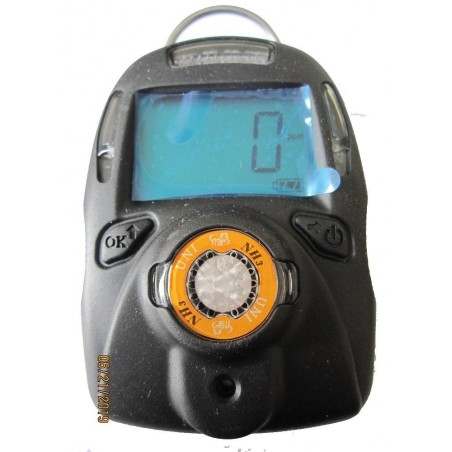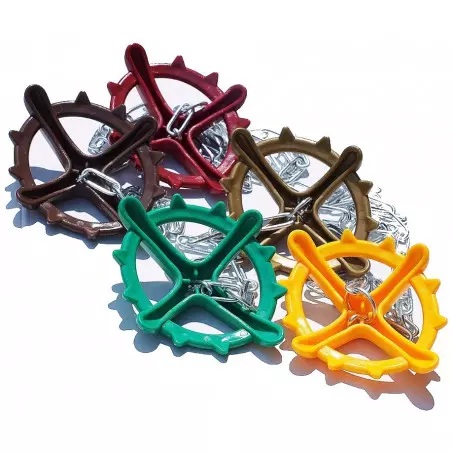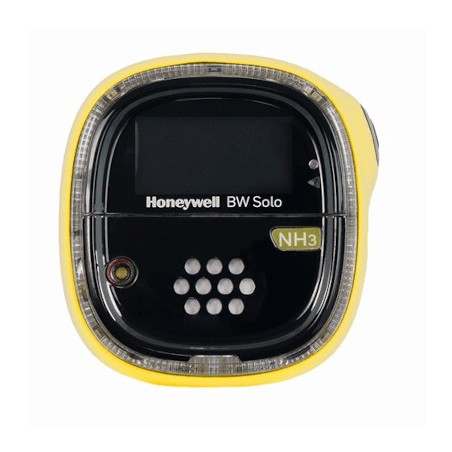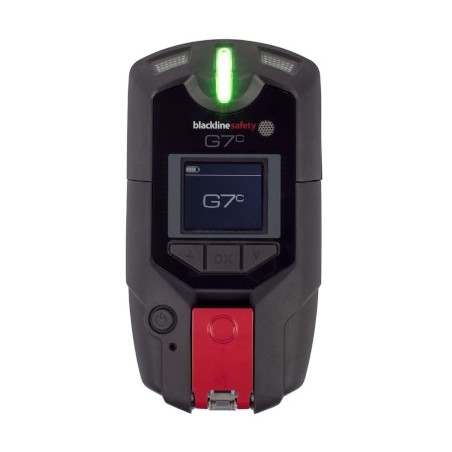What is the basis of the TRAC system?
This system is based on the solid-liquid separation of slurry by mechanical scraping in sloped V-shaped pits and is recognized as a Best Available Technique (BAT).

Due to the slope of approximately 1.5% and to the action of gravity, the liquid part moves towards one end of the pit and is channeled through pipes to an external collector while the solid part is dragged by the scrapers to the highest area of the pit where there is a transverse scraper that collects the solid part and moves it outside the barn, where it accumulates until used. This operation is carried out several times a day, so that the pits are always free of manure.
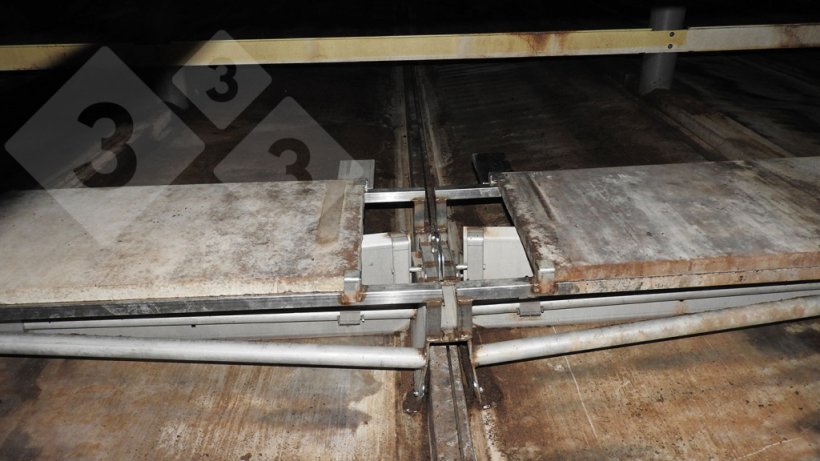
Scrapers inside the V-shaped pit.
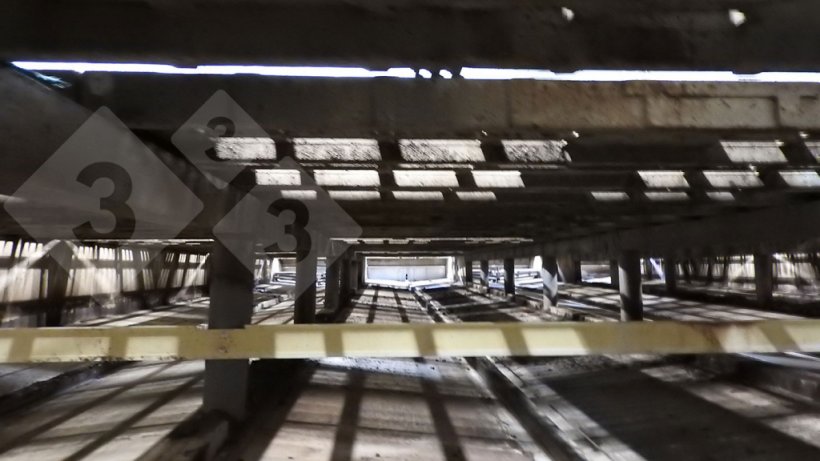
View of the scraper and cable system inside the pit.
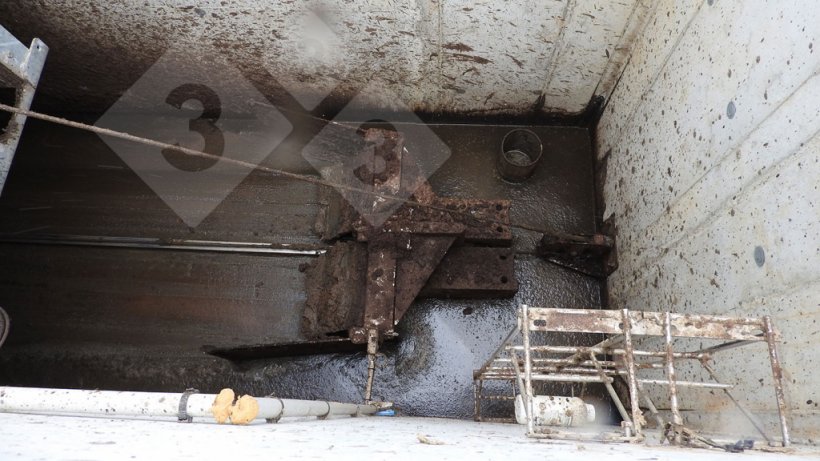
Transverse scraper located at the bottom of the barn that transports the solid part to the outside storage area.
Why have some farmers opted for this system over another?
In order to see in situ how the system works and its advantages, we went to a pig farm located in Hennon, in Brittany, France. We would like to thank Cooperl and Mr. Patrick Talibart, the owner of the farm, for facilitating the visit and for all the information they gave us.
This is a family farm with 320 sows that has incorporated the TRAC system in its new finishing barn, which started operations a year ago.
When the farmer was asked what the main reason was that led him to opt for this system, his answer was that it is a BAT that allows him to legalize his operation at an environmental level, since it allows him to reduce the area of agricultural land required and it also complies with the current European regulations on reducing gas emissions. Another advantage is that it is a simple system that does not involve consumables (such as acids for acidification) and being able to sell the solid fraction to the cooperative generates income.
Regarding the improvement of the sanitary status and productivity of the pigs, the farmer has not quantified these improvements in the animals housed under this system since, on the one hand, he has only been using it for one year and, on the other hand, his farm works with high sanitary standards and is also in the "antibiotic-free" program.
Advantages of the system
Significant reduction of NH3 emissions: This rapid separation of urine and feces several times a day means that they do not mix and therefore less ammonia is generated. A 50% reduction in ammonia emissions has been accounted for inside the barns, thus adapting to European legislation on the reduction of polluting gases. Considering that ammonia is a toxic gas with adverse effects on people and animals (in high concentrations it causes irritation of the eyes and respiratory tract), this reduction significantly improves the environment for both animals and workers.
Easy management of both fractions and adding value to slurry: The process generates a liquid fraction that is rich in ammoniacal nitrogen which the farmer himself manages on his farm and a solid fraction that concentrates 90% of the phosphorus and 55% of the nitrogen. This solid fraction can also be managed by the farmer himself or by the cooperative for the manufacture and marketing of organic fertilizers in pellet form or to supply its anaerobic digestion units, since this solid fraction, which is not degraded, has a higher methanogenic capacity. The farmer receives about €20/t of solid fraction collected on his farm from the same cooperative.
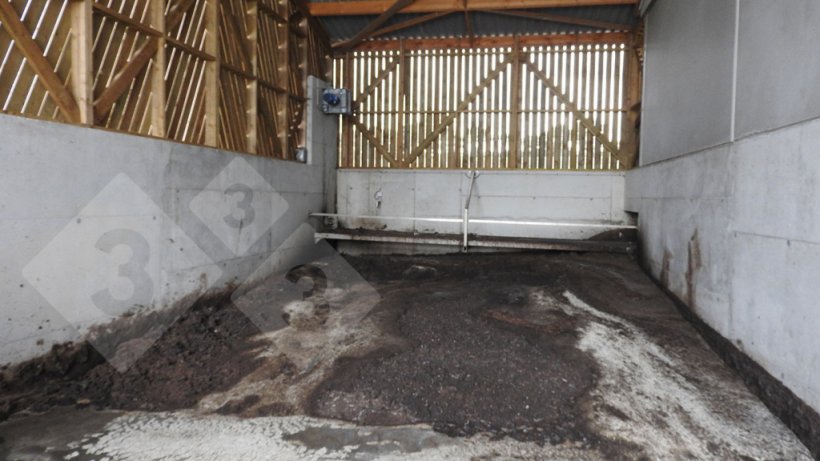
Storage of solid fraction.

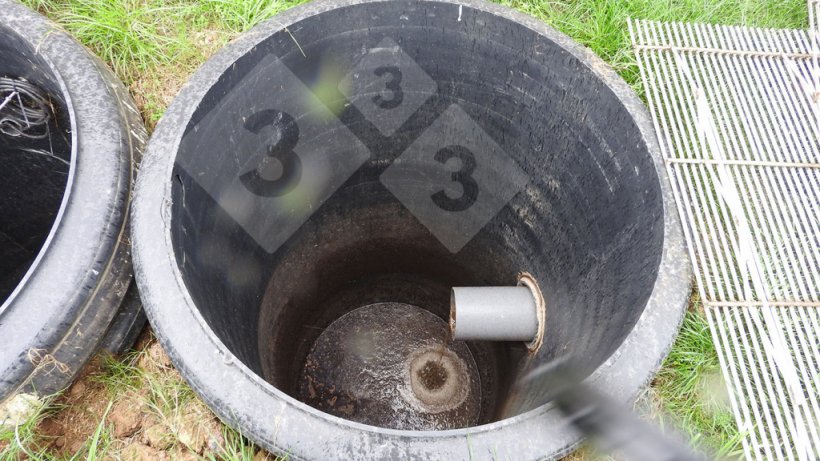
Exterior collector of the liquid fraction.
Improvements in production indexes and in sanitary status: Studies show a higher ADG in this type of system compared to the conventional system of not emptying the pits (Lagadec, S. et al, 2012). In relation to health, Cooperl comments that, due to the fact that the pits are completely cleaned at each emptying, the sanitary status of the animals is improved and that this is one of the aspects that has led many farms to opt for this system.
Easy implementation of the system: The system is applicable in both new and existing barns. It can be implemented for any production phase, although the best performance is seen in finishing since this is where a greater volume of slurry is produced, and it is not necessary to have total slat; it also works for partial slat. In relation to the type of feeding system, it is suitable for dry or liquid systems. With liquid feeding, the separated solid fraction has a higher moisture content. As far as animal welfare is concerned, it allows manipulable materials to be added.
Does not increase workload: Implementing TRAC does not imply an extra workload for the workers since the whole process is mechanized from a control panel and the farmer schedules the number of pit scrapes according to the productive phase of the animals, normally between 2 to 6 times a day. It does not require workers to be specially trained.
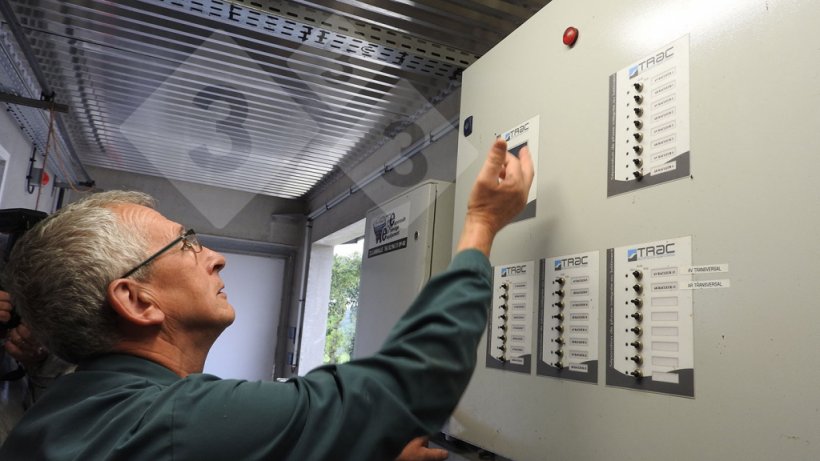
Mr. Talibart shows us the control panel for the scrapers in each room.
Maintenance and cost of investment: It is a low maintenance system; normally it is sufficient to clean and grease the cables and moving parts every 4 months. The operating cost is also very low compared to other ammonia reduction solutions. The additional investment cost is estimated at €150,000 for a 1000-head finishing barn (French construction bases) and compared to barns with slurry storage under slatted floor (conventional barn). If we take into account that Cooperl pays about 20 €/t of solid fraction and the farm produces about 700 t of solid fraction during one year, the investment pays for itself in about 11 years.
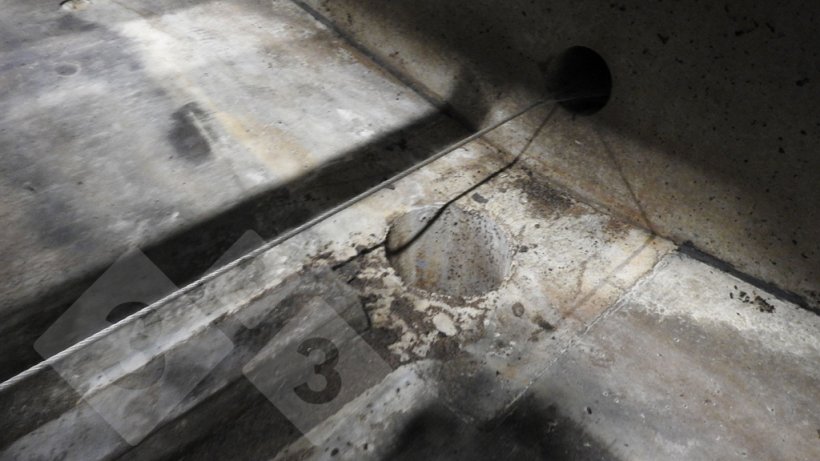
Scraper cable and lower collector for transporting the liquid part of the slurry to the outside.
333 Staff





